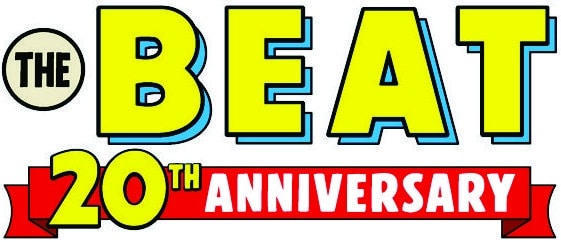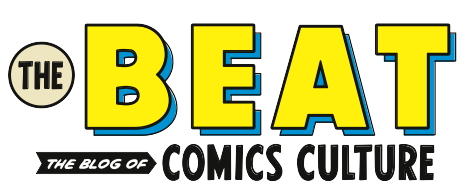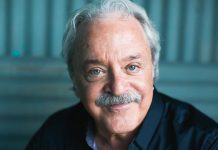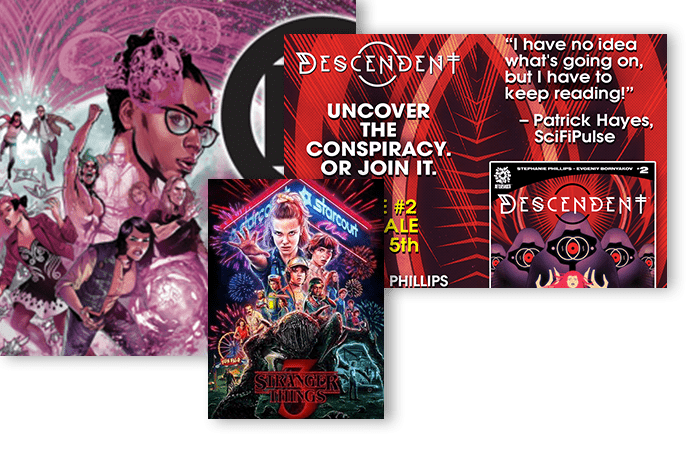IYANU is a new animated series premiering on Cartoon Network on April 5th, 2025, and the next day on Max (and later on Showmax in 44 African countries). Based on the graphic novel series created by Roye Okupe wth art by Godwin Akpan, Iyanu: Child of Wonder is published by YouNeek Studios and Dark Horse Comics. He serves as Creator, Executive Producer, and Showrunner of the series, which Lion Forge Entertainment produces. The show pulls from Nigerian culture, music, and mythology to build a kingdom called Yourubaland, where Iyanu, a brave young orphan girl, discovers she has divine powers not seen since the legendary Age of Wonders. She is accompanied by new friends Biyi, Toye, and a giant magical blue leopard named Ekun, where she must go on a quest to stop an awakening evil from the past that threatens everyone.
The Beat had the opportunity to talk to Brandon Easton (story editor/writer), Vincent Edwards (supervising director), and Samuel Kugbiyi (voice actor for Toye) about Iyanu.
The interview has been edited for clarity.
JULIAN LYTLE: My first question is, what was it about IYANU that made all of you want to join this project to adapt it to an animated series?
VINCENT EDWARDS: It’s a great story with a great hero and a great purpose and message. And everybody wanted to make sure that it was top shelf quality stuff and I was all in for that.
BRANDON EASTON: The project came to me while I was working somewhere else. I was at Blizzard Entertainment when the project came to me. The moment I cracked open the graphic novel was the moment I realized I wanted to work on this. There was such a vibrancy to it, a beauty to the artwork. It was expertly paced, which is one of the problems a lot of graphic novels have. The pacing doesn’t quite work with a lot of stuff. It was just a matter of finding something that was so well done. And when something’s that good, it’s very easy to adapt. And that was the beauty of it.
SAMUEL KUGBIYI: Well, in my case, I feel very fortunate because it just felt like a dream at first, and then it just kept giving. I’ve done a bunch of short animation voice-overs before, but I was like, okay, this is not a five-minute animation, this is a full season. And then I found out that Yemi Alade is gonna be singing the theme song, and she’s a Grammy-nominated artist. I’ve known Yemi Alade for years. Then I got on the sessions, and then I saw Adesua Etomi, and there are some great people there. I’m like, okay, this is great. So I don’t think it was the thing of – oh yeah, it’s a great show and I’m gonna be on it. I was like, oh my god, this IS a great show, and I wanna keep being on this. So I feel very fortunate to be on the show. I would say that when I saw the animation. I love animation. I might not have had the choice like the bigwigs, I’m talking Brad and Vincent, to say, do I wanna do the show? I didn’t have the choice of picking that. I was just like, it’s a Nigerian, it’s an animation – let’s go. So that’s my story of getting to be on Iyanu.
LYTLE: Okay, my second question is for Brandon and Vincent. What were some of the challenges and surprises of adapting the comic series to an animated series?
EASTON: The challenge was just trying to figure out what to keep and what to drop from the graphic novel itself and maintain Roye’s and Godwin’s original vision. I didn’t wanna compromise it. I didn’t wanna water it down. We managed to do that mainly because I was the head writer, and Roye was in the room with me, and he wrote episodes. So he would drop in things specific to Nigerian culture and specific to Yoruba culture within Nigeria. He would drop stuff in there that would make it even more authentic. And I feel like the beauty of it all was that it all came together because everybody was on the same page. And that’s very rare, many times in “Hollywood productions” because you have a lot of different motivations, a lot of different financial motivations, a lot of different politics. But generally, at least in my mind, everybody puts all that to the side to make something very good. So, the flip side of the challenge was that there was a wonderful collaborative environment, from the writers’ room to the storyboard team, the directors, the voice team, and everybody. Everybody was on the same page. And if you work enough in his town or even in graphic novels, that’s not always the case. So that was one of the beautiful things that came out of the situation.
EDWARDS: Yeah. And again, just to, you know, in the production, pre-production, and production of the show, fighting ways to amp up the things we’re working on in the story, the subtleties that aren’t always on the page of a script, right? There’s tension between Biyi and Iyanu’s relationship because they’re just friends, but they are also coming of age, and there are a lot of hormones going on. So they’re always embarrassed when they have those kinds of, oh gosh, I was hugging you moments, right? And so many other subtle things, you know, the nuances of how our characters are interrelating. Those are subleties that are implied by the script and the dialogue beats, but they’re the voice performances and the choices of what we call pencil acting when the story work comes through, you figure out what the composition needs to be, who are we looking at? Or what’s there? What’s their expression when this happens? And that gets supported by things like sound design and score, telling us that all these things aren’t on the script page, but they’re part of what the story is, right? So that it’s a process of fleshing it out and bringing it into a greater level of clarity of intention. And that’s always the fun part of the job. I wouldn’t call it a challenge. That’s what I like to do.
LYTLE: What is it like creating a world with West African influence for children and general audiences to experience, not influenced or connected to anything within the Western world?
EDWARDS: Well, I’ll just lead on, Brandon, if you don’t mind, that the rule of art is you set up a story universe and a story, a cast of characters, and you set up a tale that you’re telling, and you have to set rules. And it can be a completely fantastical world that has nothing to do with reality. But the rules that you set, you can’t ever break them, because the audience will not be drawn into your fantasy if you break your own rules. And so the more compelling and the more, you know, I don’t want to say constrained, but you really have to make sure that for me to believe that there are elves and unicorns and giant magic panthers, like you can’t just have them start talking, or, you know what I mean? So it’s stuff like that I think that makes any fantasy more compelling is when it really feels true itself.
EASTON: Also, I feel that when you’re looking at West Africa, and because of certain historical tragedies, a lot of West African culture, food, spiritual belief, and music were transported to the rest of the Western world. So a lot of that kind of shows up in the DNA of a lot of our storytelling, a lot of our music, definitely music and food. So it really wasn’t a challenge so much for West Africa, you know, for anything from Nigeria specifically to be translated into a story, particularly for younger viewers.
I feel like many of our stories have already been impacted by West Africa, Nigeria, Ghana, the Ivory Coast, and so forth. It’s really just a testament to having a really strong writers’ room and a really good, you know, directorial staff who understand the language and the shorthand of visual storytelling.
You could take anything, whether it’s from a Akira Kurosawa, whether it’s from Mamoru Oshii that did Ghost in the Shell, whether you’re talking about Jean-Luc Godard, you know, people from all over the world different filmmakers, Spike Lee, whoever, you take the visual shorthand of emotion and you drop that into your stories—and that’s how, regardless of what your mise-en-scène or whatever, I’m getting into the film stuff now, whatever your background is in your story, whatever the setting is, it doesn’t really matter. Star Wars doesn’t really take place anywhere recognizable, but there’s an emotion to it, right? And you can talk about The Lord of the Rings, you can talk about Titanic. You know I don’t get on boats. I’m not a big fan of boats or cruises, but I completely understand the terror of hitting an iceberg because James Cameron was able to take that story and make it something palpable for modern audiences. You look at the movie Aliens, also by Cameron. I’ve never fought giant space bugs, but by God, you completely understand what that scenario was like because the emotion, setting, and visual shorthand of storytelling works. So Roye and Godwin’s very Nigerian creation, very specific to Yoruba culture, we still could take elements of that and drop them into a story that anybody could figure out. And it’s just, who am I? That’s the core question of IYANU, and who doesn’t have that feeling? Who hasn’t asked that question, you know?
EDWARDS: Sorry, you lost me at giant alien space bugs. (all laughing)
EASTON: The xenomorphs, as they’re called. (all laughing)
LYTLE: Okay, guys, that’s my time. Thank you for answering my questions. Have a great day.
Iyanu premiered on the Cartoon Network on April 5, 2025. Episodes stream on Max the following day.















